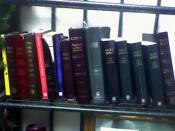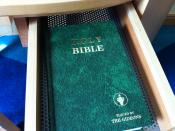These images serve healing functions by giving their viewers something they can always turn to in times of need. They give the people a sense that there is something they can do about their problems and that there are omnipotent figures watching out for them. They tells them that they must be responsible for their own actions, but that they will never be truly alone. They also compliment our understanding of Year of Wonders and Poisonwood Bible. For Year of Wonders we see depictions of saints of the religion that Anna Frith and her townfolk turned to when they were hit by the plague. For Poisonwood Bible we get a peek into the religion of the Congo natives, and of the way some of their dogmas worked.
In short, the main healing function that these images provide is hope. These images depict deities that people turn to for assistance.
Even if the saints and power figures are figments of the imagination, these things bring true aid to people. The figures may act with a placebo effect. Merely thinking that they are going to be helped often gives people an actual boost in their situation. More specifically, the altarpiece and power figure give a more internal locus of control. It makes them believe that by behaving in particular manners and by performing certain deeds they can have a figure more supreme than themselves aid them in their tasks. For example, the altarpiece reveals Saint Anthony, who can both release a great wrath of disease on the sinful and perform miracles for the holy and faithful. This is particularly important in times of plague, famine, and other devastations. If people think that nothing they do can stop a famine or plague (external locus of control), they are more likely to simply...


